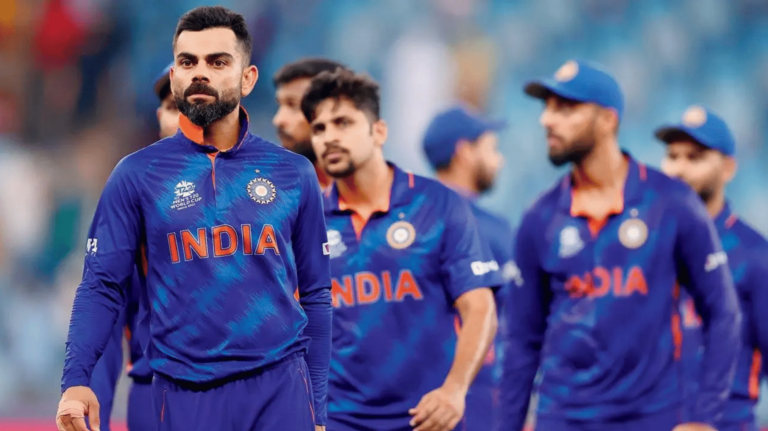The Financial Dynamics of International Cricket Tournaments
Allpaanel, 11xPlay: International cricket tournaments serve as the pinnacle of competition in the cricketing world. These tournaments bring together teams from various countries to battle it out on the field, showcasing their skills and talent to a global audience. The tournaments provide an opportunity for players to represent their nations and compete against the best in the world, creating moments of thrill and excitement for fans worldwide.
From the thrilling ICC Cricket World Cup to the fast-paced ICC T20 World Cup, these tournaments offer a platform for players to shine and make a mark in the cricketing landscape. With millions of viewers tuning in to watch the matches both at the stadiums and on television screens, international cricket tournaments hold a special place in the hearts of cricket enthusiasts. The rich history and tradition of these tournaments contribute to the global appeal and popularity of the sport, making them a cornerstone of the cricketing calendar.
Key Players in Financial Sponsorship
In the realm of cricket tournaments, financial sponsorships play a vital role in ensuring the success and profitability of the events. With the global popularity of the sport, key players in financial sponsorship have a significant impact on shaping the landscape of cricket competitions. These sponsors, ranging from multinational corporations to local businesses, not only provide crucial financial support but also contribute to the overall marketing and promotion of the tournaments. Through strategic partnerships and innovative branding opportunities, these key players help elevate the visibility and reach of cricket events, creating a win-win situation for both the sponsors and the organizers.
Moreover, the involvement of key players in financial sponsorship often extends beyond just monetary contributions. These sponsors bring with them a wealth of industry expertise, marketing resources, and networking opportunities that can further enhance the value and prestige of the cricket tournaments. By aligning themselves with the spirit and excitement of the sport, these sponsors not only gain exposure to a global audience but also have the chance to forge long-lasting relationships with fans and stakeholders. As such, the role of key players in financial sponsorship is crucial in driving the success and sustainability of international cricket tournaments.
Television Broadcast Rights and Revenue
Cricket tournaments across the globe have witnessed a significant rise in revenue generation through television broadcast rights. With the increasing popularity of the sport, broadcasting companies are willing to invest substantial sums in acquiring the rights to air matches live. These deals not only ensure extensive coverage for international tournaments but also provide a lucrative source of income for cricket boards and event organizers.
The revenue generated from television broadcast rights plays a pivotal role in the financial sustainability of cricket tournaments. The ability to reach a wide audience through television broadcasts helps in attracting more sponsors and advertisers, thereby boosting overall revenue streams. As the demand for cricket content on TV continues to rise, the value of broadcast rights is also expected to increase, creating new opportunities for financial growth in the world of cricket.
Ticket Sales and Matchday Revenue
Ticket sales and matchday revenue play a crucial role in the financial sustainability of international cricket tournaments. The revenue generated from ticket sales contributes significantly to the overall financial health of the event. Fans eagerly purchase tickets to witness their favorite teams and players in action, creating a vibrant atmosphere in the stadiums.
Matchday revenue encompasses a range of income sources, including food and beverage sales, parking fees, and merchandise purchases. These additional revenue streams further augment the financial success of cricket tournaments. The electrifying energy of matchdays not only attracts spectators but also provides opportunities for organizers to capitalize on various revenue channels, enhancing the overall economic viability of the event.
Merchandise and Licensing Deals
Cricket tournaments capitalize on their wide fan base by offering a plethora of merchandise and licensing deals. These agreements allow for the production and sale of official team apparel, accessories, and memorabilia, creating a significant revenue stream for the participating teams and tournament organizers. The licensing of intellectual property rights further extends to video games, collectibles, and other products that cater to the passionate cricket audience.
Moreover, merchandise and licensing deals are not only a source of revenue but also serve as powerful marketing tools to enhance the visibility of the tournaments and teams globally. By partnering with reputable brands for merchandise collaborations, cricket tournaments can reach a broader audience and strengthen their presence in the competitive sports market. This strategic approach not only boosts financial gains but also cultivates a strong brand identity and loyalty among fans and consumers alike.
Impact of Player Salaries on Financial Dynamics
Player salaries play a significant role in shaping the financial dynamics of international cricket tournaments. With the emergence of leagues like the Indian Premier League (IPL) and Big Bash League (BBL), the demand for top cricketing talent has soared, leading to lucrative contracts for players. These high salaries not only attract the best players but also contribute to the overall market value of the sport.
However, the increasing player salaries have put pressure on tournament organizers and franchises to balance their budgets. As players command higher wages, it becomes crucial for teams to strategize their spending effectively to stay within their financial limits. The escalating salaries also impact the distribution of revenue among stakeholders, highlighting the need for prudent financial management in the world of cricket.
Role of Host Countries in Revenue Generation
Host countries play a crucial role in the revenue generation of international cricket tournaments. The hosting nation provides the infrastructure, facilities, and logistical support necessary to hold successful matches, attracting fans and sponsors. As the tournament progresses, the host country’s hospitality, accommodations, and local attractions contribute to the overall revenue through increased tourism and visitor spending.
Moreover, host countries often collaborate with local businesses and government agencies to promote the event and capitalize on the economic opportunities it brings. By leveraging their cultural heritage, landmarks, and entertainment options, the host country can enhance the tournament experience for spectators and participants, leading to higher ticket sales, merchandise purchases, and overall revenue generation.
Importance of Brand Partnerships and Endorsements
Brand partnerships and endorsements play a crucial role in the financial dynamics of cricket tournaments. By collaborating with reputable brands, teams and events can not only secure financial support but also enhance their visibility and credibility. These partnerships often lead to increased fan engagement, as fans are more likely to support teams associated with well-known brands.
Furthermore, brand endorsements help players build their personal brand and attract lucrative sponsorship deals. Top players with strong personal brands can command higher endorsements, which not only benefits them individually but also adds value to the tournaments they participate in. Brand partnerships and endorsements are essential in creating a symbiotic relationship between players, teams, and brands, contributing to the overall success of cricket tournaments.
Challenges in Maintaining Financial Stability
Ensuring financial stability in international cricket tournaments presents numerous challenges for organizers and governing bodies alike. One key issue is the fluctuating nature of sponsorship deals, where securing long-term partnerships can be a complex task. With sponsors often seeking maximum exposure for their investments, tournament organizers must continuously navigate the evolving landscape of corporate interests to maintain a stable financial foundation.
Furthermore, the reliance on broadcast rights as a significant revenue stream can create vulnerability in the financial structure of cricket tournaments. Negotiating lucrative television deals is essential for injecting substantial funds into the sport; however, the competitive nature of the broadcasting market can pose a risk if agreements are not secured at optimal levels. This delicate balance underscores the ongoing challenge of sustaining financial stability amidst the ever-changing dynamics of the cricketing landscape.
Future Trends in Financial Dynamics of Cricket Tournaments
As cricket tournaments continue to evolve, future trends in financial dynamics are expected to shape the landscape of the sport even further. The increasing popularity of T20 leagues around the world is likely to drive revenue growth, with franchises attracting substantial investments from both domestic and international entities. This trend is indicative of a broader shift towards adapting to changing consumer preferences and enhancing fan engagement through innovative tournament formats and marketing strategies.
Moreover, the digital revolution is set to play a pivotal role in the financial dynamics of cricket tournaments, with the rise of online streaming platforms and social media channels providing new avenues for revenue generation. Leveraging digital technologies for content distribution, fan interactions, and advertising partnerships will be crucial in maximizing returns and expanding the global reach of cricket competitions. As the sport continues to embrace technological advancements, the financial landscape of cricket tournaments is poised to undergo significant transformations in the years to come.
What are some key factors that influence the financial dynamics of cricket tournaments?
Some key factors include financial sponsorship, television broadcast rights, ticket sales, merchandise and licensing deals, player salaries, host countries, brand partnerships, and endorsements.
How do television broadcast rights contribute to the revenue of cricket tournaments?
Television broadcast rights are a major source of revenue for cricket tournaments, as broadcasters pay significant amounts to secure the rights to broadcast matches to a global audience.
Why are player salaries important in the financial dynamics of cricket tournaments?
Player salaries play a significant role in the financial dynamics of cricket tournaments, as they impact the overall budget of teams and leagues, and can influence the competitiveness and marketability of the sport.
What role do host countries play in revenue generation for cricket tournaments?
Host countries contribute to revenue generation by hosting matches, selling tickets, and attracting tourists and viewership, which in turn boosts the economic impact of the tournament on the local economy.
How important are brand partnerships and endorsements in the financial dynamics of cricket tournaments?
Brand partnerships and endorsements are crucial in generating additional revenue for cricket tournaments, as they provide opportunities for sponsors to reach a wider audience and increase the overall value of the tournament.
What are some challenges faced in maintaining financial stability in cricket tournaments?
Some challenges include fluctuating market conditions, competition from other sports and entertainment options, rising player salaries, and the need to constantly innovate and adapt to changing consumer preferences.
What are some future trends expected in the financial dynamics of cricket tournaments?
Future trends may include increased digital and streaming rights, innovative revenue models, expansion into new markets, greater emphasis on fan engagement and experiences, and the continued growth of the sport globally.







